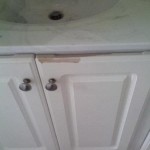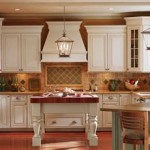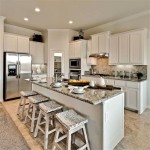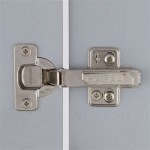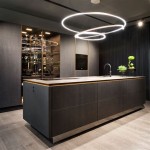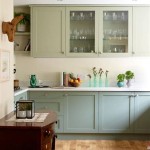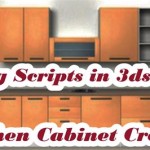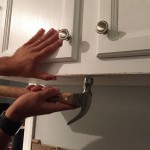Understanding the Anatomy of Kitchen Cabinets: A Guide to Their Component Parts
Kitchen cabinets are integral components of any functional and aesthetically pleasing kitchen. Whether embarking on a renovation project, replacing damaged parts, or simply gaining a better understanding of kitchen design, familiarity with the various components that make up a cabinet is essential. This article provides a comprehensive overview of the common parts found in kitchen cabinets, offering clear descriptions and explanations of their functions.
The Cabinet Box: The Foundation of Strength and Storage
The cabinet box, also often referred to as the cabinet carcass, forms the primary structure and provides the supporting framework for the entire cabinet. It is typically constructed from plywood, particleboard, or medium-density fiberboard (MDF). Plywood offers superior strength and resistance to moisture, making it a preferred choice. Particleboard is a more budget-friendly option but is more susceptible to damage from water exposure. MDF provides a smooth surface for painting and is less prone to warping than particleboard.
The box consists of several key panels:
*Side Panels:
These are the vertical panels that form the sides of the cabinet and provide the primary structural support. Their thickness and material quality significantly impact the cabinet's overall stability. *Bottom Panel:
This horizontal panel forms the base of the cabinet and supports the weight of stored items. It is crucial for preventing sagging and maintaining the cabinet's shape. *Top Panel (or Stretcher):
This panel runs horizontally across the top of the cabinet box. In base cabinets, it often acts as a mounting surface for the countertop. In wall cabinets, it provides structural support and a surface for attaching the cabinet to the wall. Sometimes wall cabinets have a full top panel, depending on the design. *Back Panel:
This panel encloses the rear of the cabinet, providing additional support and preventing items from falling out the back. The back panel is often thinner than other panels in the box and may be made of a less expensive material. In some frameless cabinets, the back panel is a critical structural element, providing stability and preventing racking. *Toe Kick (or Recess):
This is the recessed area at the base of base cabinets that allows for comfortable standing while working at the countertop. The toe kick is often constructed from the same material as the cabinet box and is finished to match the cabinet exterior.The Cabinet Face: Doors, Drawers, and Decorative Elements
The cabinet face refers to the visible front of the cabinet and includes the doors, drawers, and any decorative elements that are attached. The face significantly impacts the aesthetic appeal of the kitchen and determines the cabinet's style.
*Cabinet Doors:
These hinged panels provide access to the cabinet's interior storage space. Cabinet doors are available in a wide variety of styles, including raised panel, flat panel, Shaker, and slab. The door style significantly contributes to the overall design aesthetic of the kitchen. Door materials include solid wood, wood veneer, laminate, and painted MDF. *Drawer Fronts:
These panels attach to the front of drawers, concealing the drawer box and providing a finished appearance. Like cabinet doors, drawer fronts come in various styles and materials to match the overall cabinet design. *Face Frame (for Framed Cabinets):
This is a wooden frame attached to the front of the cabinet box. It adds structural stability and provides a surface for attaching doors and drawer fronts. Face frames are typically made of solid wood and can be stained or painted to match the cabinets. *Door and Drawer Hardware:
This includes hinges, knobs, and pulls that are used to open and close the doors and drawers. Hardware comes in a wide range of styles, materials, and finishes, allowing for customization and personalization of the kitchen design. This seemingly small detail can significantly impact the overall look and feel of the cabinets. *Decorative Panels and Moldings:
These are optional elements that can be added to the cabinet face to enhance its visual appeal. They include decorative panels on the sides of cabinets, crown molding at the top of wall cabinets, and base molding at the bottom of base cabinets.Internal Components: Maximizing Storage and Functionality
The internal components of a kitchen cabinet are crucial for maximizing storage space and improving functionality. These components help organize stored items and make them easily accessible.
*Shelves:
These horizontal surfaces are used to store items inside the cabinet. Shelves can be fixed or adjustable, allowing for customization of the storage space. Shelf materials include wood, plywood, particleboard, and wire. Adjustable shelves provide greater flexibility in organizing items of different sizes. *Drawer Boxes:
These are the internal boxes that slide in and out of the cabinet. They are typically constructed from wood, plywood, or metal. The drawer box should be sturdy and well-constructed to withstand the weight of stored items. Dovetail joints are a common and durable method for assembling drawer boxes. *Drawer Slides (or Runners):
These mechanisms allow drawers to slide smoothly in and out of the cabinet. Drawer slides come in various styles, including side-mount, under-mount, and center-mount. They can also feature soft-close mechanisms that prevent drawers from slamming shut. The weight rating of the drawer slide is important to consider based on the anticipated load. *Roll-Out Trays (or Shelves):
These trays slide out from the cabinet, providing easy access to items stored at the back. Roll-out trays are particularly useful for storing pots, pans, and other large items. *Lazy Susans:
These rotating shelves are often used in corner cabinets to maximize storage space and make items easily accessible. Lazy Susans are available in various sizes and configurations. *Pantry Pull-Outs:
These tall, narrow units pull out from the cabinet, providing organized storage for pantry items. Pantry pull-outs often feature adjustable shelves and door-mounted storage. They are designed to maximize vertical storage space and improve organization. *Specialty Inserts:
A variety of specialty inserts are available to customize cabinet storage for specific needs. These include utensil organizers, spice racks, knife blocks, and wine racks.Understanding the names and functions of these kitchen cabinet parts is crucial for effective communication with contractors, designers, and suppliers. It allows for informed decision-making during kitchen renovations or replacements. Choosing high-quality materials and components will ensure the longevity and functionality of kitchen cabinets, contributing to a more efficient and enjoyable kitchen space. Furthermore, familiarity with these components allows for informed DIY repairs and modifications, potentially saving money and extending the life of the cabinets. Investing time in understanding the anatomy of kitchen cabinets is an investment in the overall functionality and aesthetic of the kitchen.

Kitchen Cabinet Parts Names Google Search Plans Cabinets Making

Cabinet Parts And Profiles

Kitchen Cabinet Terms Cabinets Of The Desert

Everything You Need To Know About Kitchen Cabinets Rona

10x10 Bay Shaker White Kitchen By Cabinetselect Com

Kitchen Cabinet Parts Terminology Granite Quartz Countertops Cabinets Factory

Kitchen Cabinets And Components That Make Cooking A Dream

Shelves 252c 2520backsplash 2520 2520faucet 2520sink 2520drawer 2520extractor 2520fan Kitchen Pictures Utensils Dictionary For Kids

Hoosier Cabinet Popular Woodworking

Voary For Frameless Cabinet Parts
Related Posts

